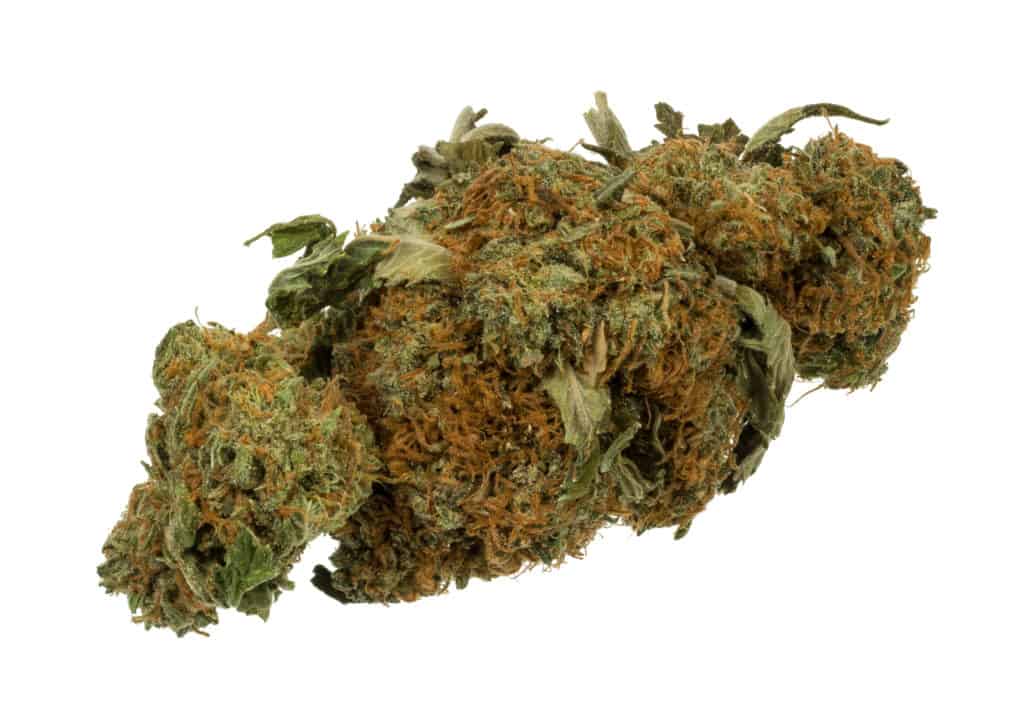Everything You Need to Know about THC: the Good, High, and Ugly
With advancing research techniques and interest from more scholars, extensive research into the cannabis plant is bound to continue for a long time to come. New research, no doubt, would shed more light on some of the grey areas surrounding the side effects of and benefits of medical cannabis. However, the presence of THC in cannabis is not one of those unknowns. Sometime in 1964, scientists at the Weizmann Institute of Science in Rehovot, Israel, notably led by Dr. Raphael Mechoulam, successfully isolated D9-tetrahydrocannabinol.
The compound is structurally similar to anandamide- a naturally occurring neurotransmitter. This gives it the ability to alter communications within the brain, affecting brain centers that are linked to pleasure, movement, sensory perception, memory, thoughts, etc. Since its isolation, THC has been extensively studied (within limits allowed by the law), and the discoveries have been nothing short of interesting.
Perhaps because it was the first major compound that would be isolated from the cannabis plant, THC was initially thought to be responsible for all the therapeutic benefits of medical marijuana. More research, however, led to the elucidation of other cannabinoids and the discovery of the human endocannabinoid system. The new knowledge available led to further scrutinization of THC and the discovery that while the compound has several amazing therapeutic benefits, it cannot possibly be responsible for all the effects of medical marijuana. Importantly, THC was also associated with the psychoactive effects of cannabis. Today, the compound itself, like the whole cannabis plant, is a Schedule I controlled substance under Federal laws.
Public Perception of THC
There are not many compounds capable of dividing opinion as much as THC does. The psychoactive effects of the compound are well documented, and it is the scapegoat among anti-marijuana advocates. According to them, it is the main reason why marijuana should remain under a tight leash. Among the recreational users, THC holds a cult hero status. It’s the compound responsible for the ‘high’ they feel, and they don’t see any reason why the government should have a say on what they can or can’t do with nature’s gift.
The medical world sort of holds a middle ground. We might be doing humanity a disservice if we choose to ignore the compound’s amazing therapeutic benefits. There is enough evidence to suggest that the potential side effects of THC cannot be ignored. The challenge is finding a suitable middle ground.
Some Side Effects of THC are Therapeutic Benefits
Relieves Pain
Studies have shown that THC has some analgesic properties. Unlike CBD, THC appears to work well in the resolution of acute pain. However, it appears the analgesic properties of THC are not strong enough to consider using the drug alone. It has been shown that THC works in synergy with CBD to provide analgesia.
Appetite Stimulant
THC is known to improve the eating habits of people with eating disorders such as anorexia. It could also help stimulate the appetite of people suffering from advanced stages of cancer or HIV/AIDS. A pilot study conducted by Pharmacology and Biochemistry Behavior showed that administering THC orally for five months helped to increase the weight of 7% of the HIV patients involved in the study.
Helps with Sleep
Cannabis is known to improve the length and quality of sleep in patients who have insomnia and other sleeping disorders. THC is already known to induce most of the psychoactive effects of cannabis. Further studies have shown that the compound could also stimulate the sleep center. The drug improves most of the essential parameters in sleep, including the time taken to get to sleep, the length of sleep as well as the overall quality of sleep.
PTSD
Cannabinoid has been employed to help people relax since time immemorial. Numerous studies have backed up this traditional use, showing that cannabis can indeed help with stress. Due to the effect of THC on the interaction and processing of information within the hippocampus, it has been shown to help people suffering from PTSD.
Relieves Nausea and Vomiting
Alongside CBD, THC is known to relieve nausea and vomiting, especially in patients suffering from the side effects of chemotherapy. It is thought to elicit this therapeutic effect by binding with the abundant cannabinoid in the gastrointestinal tract. For managing nausea and vomiting, THC works best in synergy with CBD.
Relieves Muscle Spasticity
Stiffness in the muscles is a common symptom in people with neurodegenerative diseases, especially Multiple Sclerosis. Studies have shown that medical marijuana can help relieve symptoms in this category of patients, and THC is thought to play an active role in eliciting this therapeutic effect. Sativex is a patented product obtained from medical cannabis and approved in 28 countries for the treatment of painful muscle spasms. Sativex contains equal concentrations of THC and CBD.
Glaucoma
When consumed orally or via the inhalation route, THC is capable of reducing intraocular pressure, a major contributor to glaucoma. Interestingly, this effect is not observed when THC or medical marijuana is applied directly to the eyes. There is little evidence to suggest that THC may enjoy widespread acceptability when it comes to treating glaucoma. This is because the effect of THC on intra-ocular pressure is short-lived, and most other conventional glaucoma treatments outperform the compound.
What Are Some of the Side Effects of THC?
Like every other therapeutic compound, THC is capable of causing unwanted effects in the user. Although different people might react differently to the drug, it is important to know the risks. Below are some of the known side effects of THC.
Euphoria and Impaired Sensory Perception
The psychoactive side effects of THC are well documented. THC stimulates the brain’s reward system, flooding the brain with dopamine- the feel-good chemical. The dopamine is responsible for the euphoric feeling users experience after using cannabis. Impaired sensory perception may make foods taste better, colors seem brighter, and textures seem more interesting.
Anxiety and Paranoia
At moderate doses, the user could experience mild social anxiety or paranoia. This is caused by the activation of the amygdala. At very high doses, the fear, anxiety, or paranoia caused by the drug could grow worse.
Dry Mouth
THC is capable of making your mouth dry, making you uncomfortable at best, and exposing you to infections and gum disease. THC causes dry mouth by binding to the cannabinoid receptors in the salivary glands and inhibiting the production of saliva.
Red Eyes
You might have noticed that eye drops are a must-have for many of your cannabis-smoking friends. This is due to the THC’s ability to cause redness and dryness of the eyes. The mechanism behind this is not fully elucidated, although it is thought to be due to the blood pressure-lowering and pupil-dilating effects of THC.
Hunger Pangs
Understandably, THC’s appetite-stimulating effects could send people with a normal appetite into overdrive. By stimulate the appetite control center in the brain, THC can make you feel intense hunger pangs, and you could find yourself eating much more than you need.
Sleepiness and Lethargy
THCs' ability to treat insomnia also means it can lead to excessive somnolence in normal people. The drug also causes lethargy and general weakness in some individuals making it tough to carry out your daily activities.
Is There a Way to Avoid the Side Effects of THC?
The synergistic relationship between THC and CBD rules out the possibility of totally ignoring THC. A compromise has to be reached between the compound’s therapeutic benefits and side effects. For many, that compromise is low-THC cannabis. Consuming strains with a low THC to CBD ratio gives you the opportunity to enjoy the amazing benefits of THC without experiencing most of the side effects.
If you must use high-THC strains, you must never forget the golden rule of cannabis consumption- ‘start low and go slow.’ When you follow this rule, you’re likely to discover the best dose for you. CBD is also known to counteract the effects of THC. If you happen to overdose on THC, consuming pure CBD may help you snap out of the impact. We suggest no operating machinery or driving while stoned in Florida.
__ __
Read our other articles, "Exploring Therapeutic Effects of Marijuana Without the High" and "What are the Side Effects of Smoking Weed for Medical Purposes?".



Comments are closed.